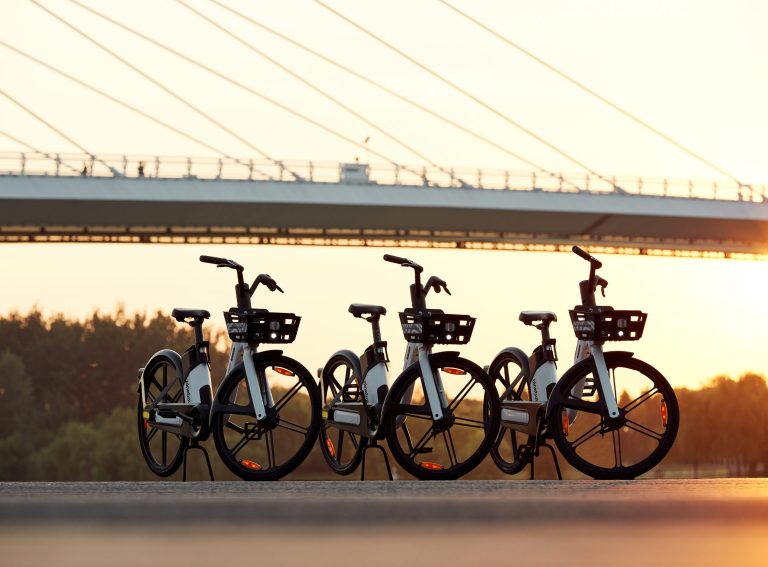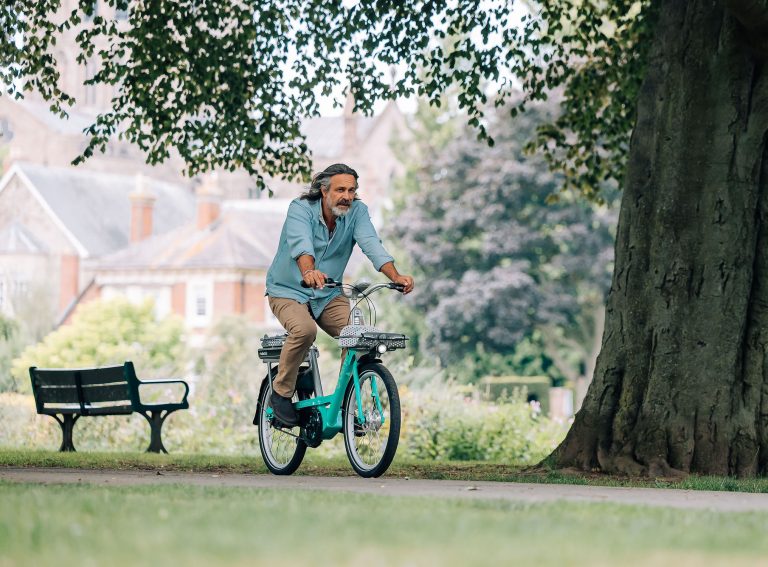Author: Ross Ringham, Director of Communications (EMEA), Superpedestrian
It was the last corner of the last lap of electric racing series Formula E’s very first race. Shocked crowds watched as two cars collided at the final corner, pitching one into the air like a high-speed projectile. The battery-powered racing car, with driver Nick Heidfeld still onboard, struck the metal fence violently before landing upside down.
It was a horrifying crash that reduced Heidfeld’s car to a mess of crumpled parts. Remarkably, after a few seconds, he emerged from the wreckage, unmarked. The heap of smashed parts that had once been a racing car was delivered to the garage later, on the back of a lorry.
One part that didn’t crumple, deform or detach was the battery, all 300kg of it. For that first generation of Formula E racing car, the battery was created by Williams Advanced Engineering and was an integral part of the chassis. Lithium-ion cells were packed into a carbon-fibre “battery safety case” and bolted securely to the bulkhead. The battery was intended to last, not just for a race or two, but for an entire season. In fact, Heidfeld’s battery was still fully operational after the smash.
Before that first race, the sport’s detractors derided the idea of a fixed battery, labelling it a low-fi solution for a cutting-edge series. Some called for swappable batteries, describing them as more relevant to the future of the automotive industry. Williams and the FIA insisted their approach was safest and brooked no dispute. Heidfeld’s acrobatics demonstrated conclusively that this safety engineering decision had been the correct one.
Some shared electric scooter operators are becoming increasingly tribal when it comes to the batteries in their vehicles, insisting that batteries that are swappable by users or crew are greener than sealed, integrated units. Others say that sealed batters are greener, because they last longer, both on a per charge and lifecycle basis.
Safety, however, is rarely mentioned. Why?
Accountability on safety
Most e-scooter operators buy their vehicles from one of three outsourced suppliers. That removes accountability for safety engineering decisions and breaks the knowledge chain.
Cities around the world today that may be considering procuring shared e-scooter fleets (such as Dublin or Glasgow) would do well to ask: what level of expertise in vehicle design and safety can a company that does not design, engineer, test, manufacture and apply lifetime tracking to its own vehicle really bring?
Moreover, how safe is it to have lithium batteries rattling around in the backs of vans like a set of loose Ming vases or, worse, being handled by untrained customers?
I think back to standing alongside the legendary Alain Prost in the garage in Beijing in 2014, hearing the collective gasp from the crowd outside as Heidfeld hit the barriers. I remember the sickening sensation at realising this could be a fatality unfolding in front of my eyes. I remember the sense of relief on seeing Nick walk free, thanks to the protection engineered-in to his vehicle.
And I remember the sense of wonder when one of the Williams crew told me they’d tested the battery and it had retained 100% integrity. No leaks, no cracks, no fires – no problems.
Seven years later, Formula E still chooses to use integral batteries packed in sealed units. The sport has seen no fatalities, nor even any serious injuries, despite the high speeds, higher voltages, temporary road-based courses and furious wheel-to-wheel action.
Safety first
Integrated batteries are still the best way to assure protection of racing drivers, marshals and spectators in Formula E. And that’s in an environment where each battery is surrounded by a team of highly-skilled engineers several times a day.
To be clear, e-scooters are not Formula E. But the same priority – safety first – applies. Structural strength, which is reinforced with sealed, integrated batteries, is the most important starting point, particularly when 80% of all e-scooter fatalities result from being hit by cars.
Superpedestrian’s advanced self-protecting system, called VIS, is the closest thing to having a team of engineers onboard the scooter every ride, with five microcomputers running 1,000 vehicle tests every second. Even with this impressive safety tech, our engineers believe there is a long way to go before there is enough rigorous testing, iteration and data to demonstrate that swappable batteries can be as safe as our sealed units.
When it comes to safety on our streets and for our communities, we take a zero-risk approach. I wonder how other fleet operators can really claim to do the same when they do not carefully plan every single detail of vehicle safety. And I worry for communities where such potentially sub-standard vehicles are deployed.
Every city deserves the smartest, safest e-scooter.
Sponsored by Superpedestrian
This article is featured as part of our partnership with Superpedestrian.











